

Module 4: Aerodynamics
Get ready to learn all about Newton’s second law and the features of a rocket that help it blast into space. You’ll also continue the engineering design process and create your first rocket prototype!
Newton’s second law
Force = mass x acceleration
This law tells us that when an object has more mass (it’s heavier), it needs more force to make it move. This means if your rocket is heavy, it will need stronger forces to get it off the lift pad.

Video transcript: Newton's second law
Aerodynamics
When you are trying to launch objects with a lot of mass (like rockets) into the air, it’s important to think about aerodynamics. But what is aerodynamics anyway?
Aerodynamics is the study of how air moves around an object. A rocket’s aerodynamics affects its forces of flight (lift, weight, thrust and drag). So better aerodynamics = better flight.
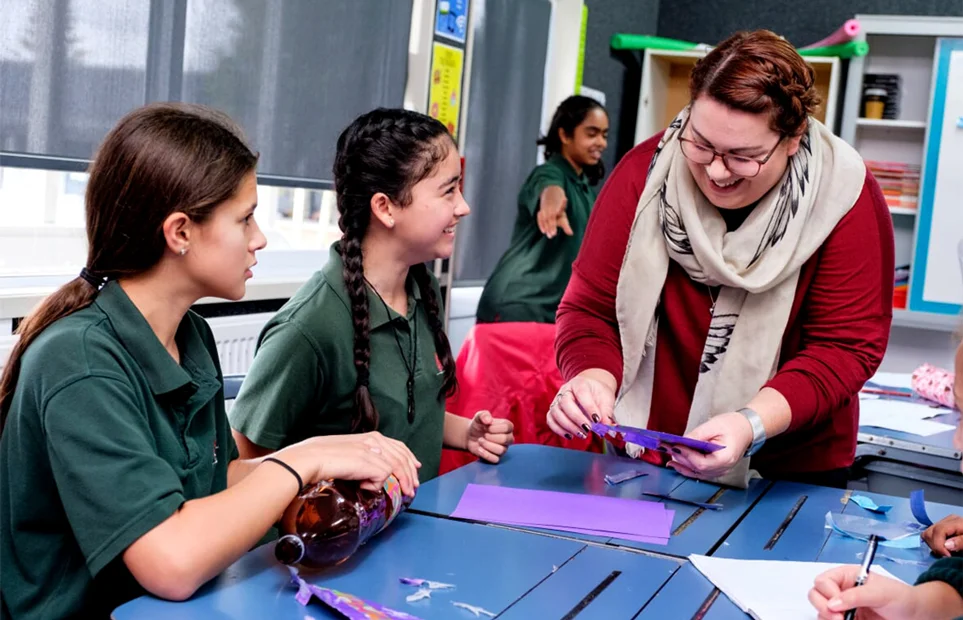
Features of an aerodynamic rocket
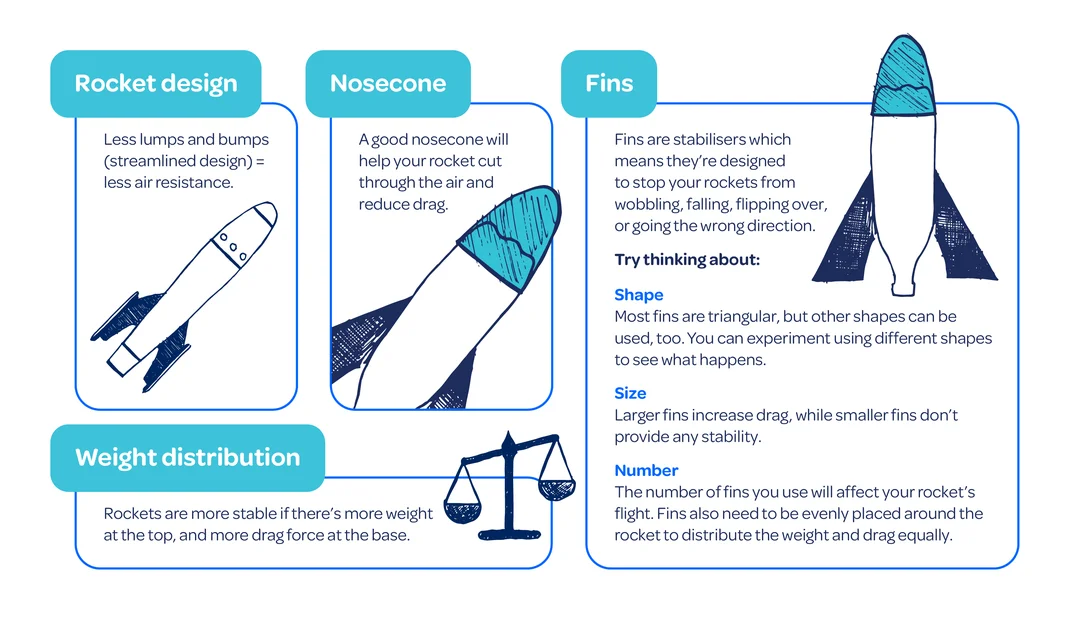
The shape and design of a rocket can help it cut through the air and improve its aerodynamics. You can test this out by crafting and flying different types of paper planes and observing which design flies the best – give it a go!
Create
Crew, now that you know the features of a successful, aerodynamic rocket, it’s time for step three in the engineering design process — create
You’ve imagined some amazing rocket designs. Let’s choose your best one to create a prototype with your crew.
What’s a prototype?
A prototype is a simple model that lets you test out an idea. Just like an engineer, you can use your prototype to test how your rocket will work and then make changes to improve it.
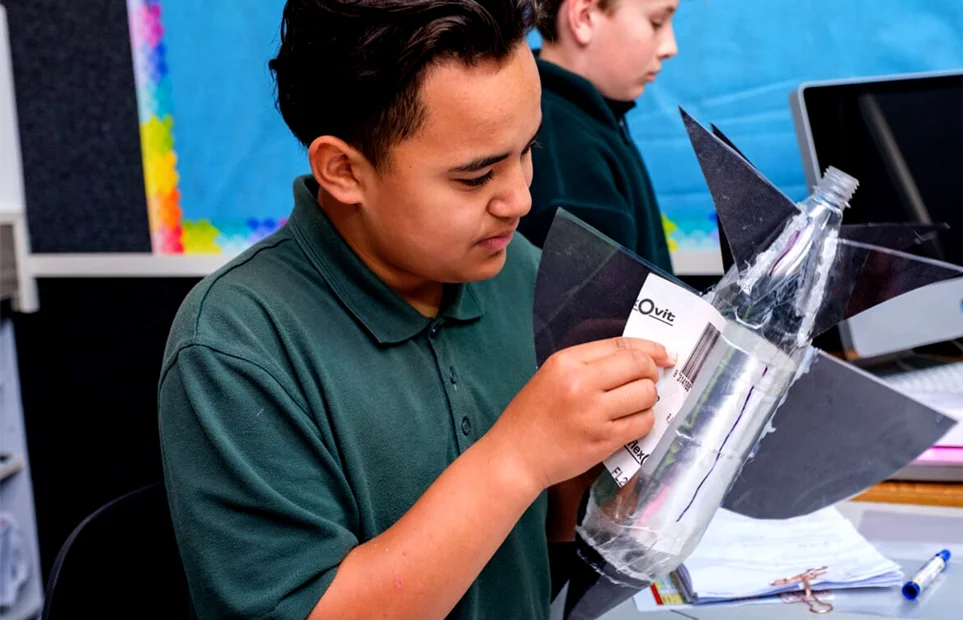
Safety tip!
If you use hot glue guns to attach fins and decorations to your rocket, make sure you are using PET plastic soda bottles. These can withstand heat up to 260°C safely and you should have no distortion of your bottle. Check with Mission Command that you have a PET bottle before you add hot glue.
Allow glue to dry and harden for 24 hours before launching.

Mission Brief 7: Create
Thinking about your new knowledge on Newton's laws and aerodynamics, see if you can make any improvements to your original rocket design. Then, create your rocket prototype!
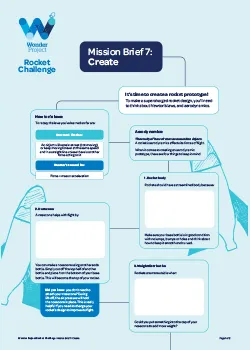
Ngā tohutohu mō te Whāinga 7: Kia kaha te waihanga
I a koe e whakaaro ana ki ngā mātauranga hou mō ngā ture a Niutana me te koutatanga, ka taea rānei ētahi whakapaitanga ki tō hoahoa ā-takirirangi taketake. Kia mutu, hangaia te tauira o tō tākirirangi!

Rocket weight distribution check
Now that your rockets are all looking awesome, let’s test whether their weight distribution is aerodynamic enough for lift-off.

Mission Brief 8: Rocket weight distribution
Bring your crew together and perform two tests to see if your rocket's weight distribution is aerodynamic.
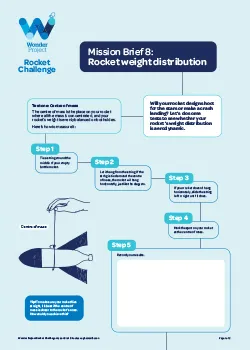
Ngā tohutohu mō te Whāinga 8:
Te horapatanga ā-taumaha o te tākirirangi
Huihuia tō kapa, ā, whakaotia ngā whakamātautau e rua kia kitea ai me e koutata ana te horapatanga ā-taumaha o tō tākirirangi.

Understanding your data
Using the data you’ve collected on your rocket’s weight distribution, you can figure out how to improve its aerodynamics.
Get into your crew and analyse your results on Mission Brief 8. Your Mission Command can help you understand your data.
Update your sticker chart
Have you completed all the Mission Briefs for this module? Don’t forget to put a sticker on your chart!
Module 4 checklist
- Watched: Newton’s second law
- Discovered aerodynamics
- Nailed the third step of the engineering design process – create
- Watched: Modifying your rocket
- Completed Mission Brief 7: Create
- Completed Mission Brief 8: Rocket weight distribution
Ready for the next step?